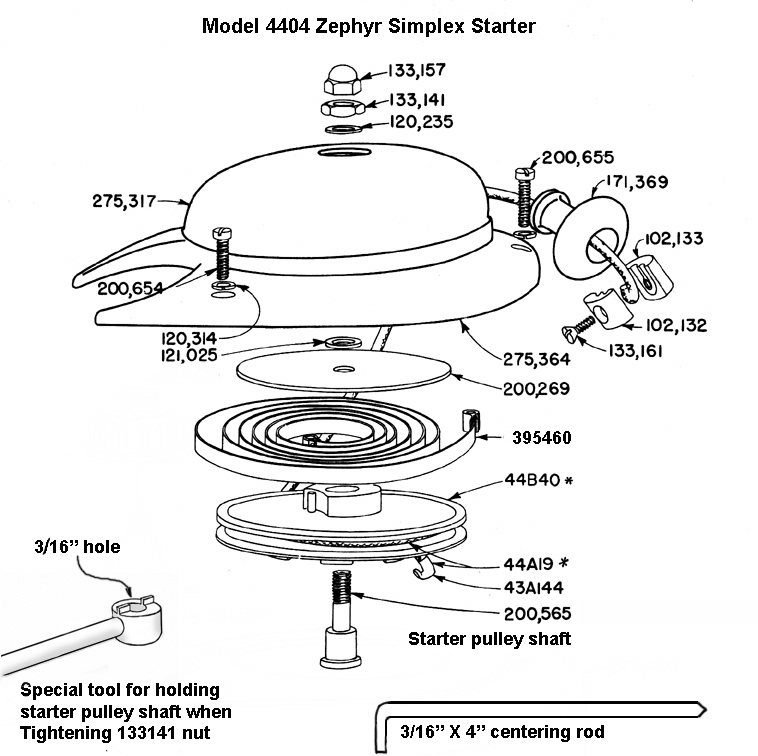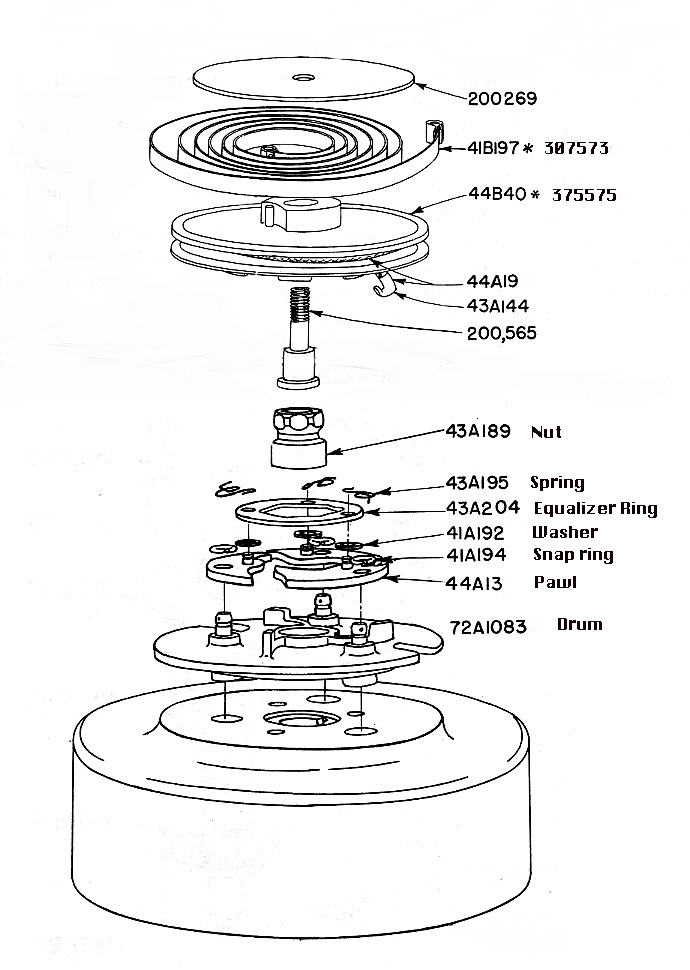Home › Forum › Ask A Member › making springs from piano wire
- This topic has 16 replies, 4 voices, and was last updated 5 years, 10 months ago by
 Tubs.
Tubs.
-
AuthorPosts
-
December 26, 2019 at 10:00 am #190006

A "Boathouse Repair" is one thats done without having tools or the skills to do it properly.
January 4, 2020 at 8:24 pm #189983More loops reduce tension. Naturally heavier wire increases tension. – About those old “Simplex” auto rewind starters that used the 43A195 springs – Because the screws holding the fuel tank to the motor and starter housing to the tank allowed some leeway to compensate for variations in castings, The hole in the starter housing for the spindle is large. Whenever the housing is removed for service, it is recommended that tho acorn nut on top be removed and a 3/16″ rod to center the spindle over the crankshaft. Damage happens when the projections on the rope pull catch the Starter pawls as the housing is screwed in place. This happens because the pawls are extended at rest. So when you install the housing, first pull out the starter rope. Release the rope when the housing is resting lightly on the pawls and the turning pully will move off the pawls and drop in place. It must be centered before you tighten the screws.



 January 4, 2020 at 8:25 pm #189985
January 4, 2020 at 8:25 pm #189985Try again – – –
Moor loops decreases the tension. On some outboards the pawls could drag at a slow idle. The extra turn decreased the tension so the pawls would extend at a slower speed. Of course heavier wire increases tension. – about those old “Simplex” auto rewind starters. – Because of minor variations in sand castings and the fact that the hole a screw goes into must be slightly larger than the screw, the hole in the starter housing is larger than the shaft of the spindle that holds the rope pull in place. This allows the bully to be centered over the crankshaft with a 3/16″ rod. Most starter damage happens when the housing is tightened with the projections on the rope pull pressing on the pawls. The pawls are always extended at rest. So when replacing a starter housing, first pull out the rope. When the housing is resting lightly on the pawls, allow the rope to retort and the projections will drop into place when they slide off the pawls. Then of course the pulley must be centered before the screws are tightened.



 January 4, 2020 at 8:25 pm #189986
January 4, 2020 at 8:25 pm #189986Try again number 4
Moor loops decreases the tension. On some outboards the pawls could drag at a slow idle. The extra turn decreased the tension so the pawls would extend at a slower speed. Of course heavier wire increases tension. – about those old “Simplex” auto rewind starters. – Because of minor variations in sand castings and the fact that the hole a screw goes into must be slightly larger than the screw, the hole in the starter housing is larger than the shaft of the spindle that holds the rope pull in place. This allows the bully to be centered over the crankshaft with a 3/16″ rod. Most starter damage happens when the housing is tightened with the projections on the rope pull pressing on the pawls. The pawls are always extended at rest. So when replacing a starter housing, first pull out the rope. When the housing is resting lightly on the pawls, allow the rope to retort and the projections will drop into place when they slide off the pawls. Then of course the pulley must be centered before the screws are tightened.



 January 4, 2020 at 8:25 pm #189987
January 4, 2020 at 8:25 pm #189987Number6
Moor loops decreases the tension. On some outboards the pawls could drag at a slow idle. The extra turn decreased the tension so the pawls would extend at a slower speed. Of course heavier wire increases tension. – about those old “Simplex” auto rewind starters. – Because of minor variations in sand castings and the fact that the hole a screw goes into must be slightly larger than the screw, the hole in the starter housing is larger than the shaft of the spindle that holds the rope pull in place. This allows the bully to be centered over the crankshaft with a 3/16″ rod. Most starter damage happens when the housing is tightened with the projections on the rope pull pressing on the pawls. The pawls are always extended at rest. So when replacing a starter housing, first pull out the rope. When the housing is resting lightly on the pawls, allow the rope to retort and the projections will drop into place when they slide off the pawls. Then of course the pulley must be centered before the screws are tightened.



 January 4, 2020 at 8:25 pm #189989
January 4, 2020 at 8:25 pm #189989Now you get the rest of the story



 January 4, 2020 at 8:25 pm #189991
January 4, 2020 at 8:25 pm #189991



-
AuthorPosts
- You must be logged in to reply to this topic.

